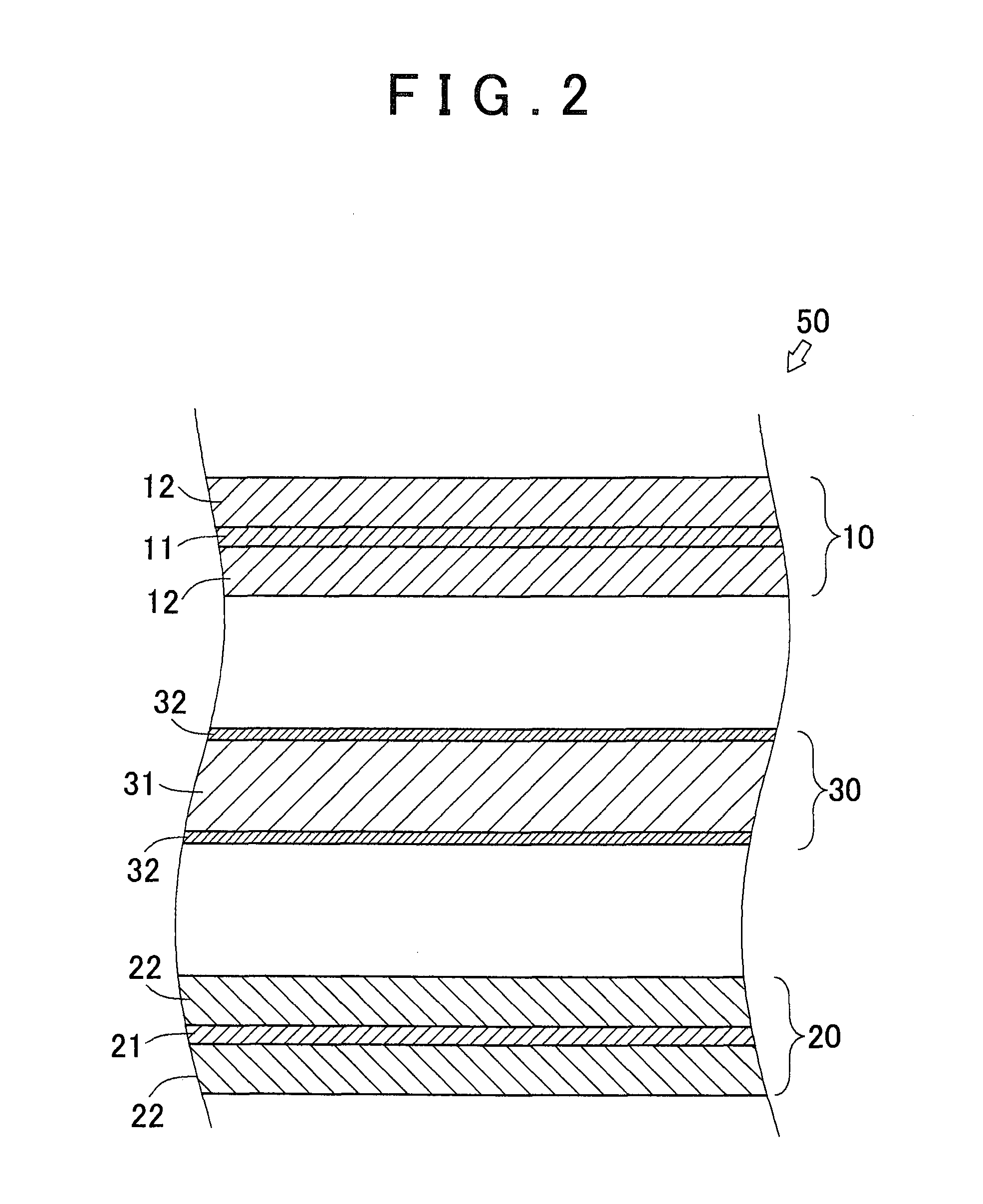Nonaqueous electrolyte secondary battery and method of manufacturing nonaqueous electrolyte secondary battery
- Summary
- Abstract
- Description
- Claims
- Application Information
AI Technical Summary
Benefits of technology
Problems solved by technology
Method used
Image
Examples
Embodiment Construction
[0020]The structure of the lithium ion secondary battery 100 is described while referring to FIG. 1. In FIG. 1, for the sake of simplicity, the battery case 40, the coiled electrode assembly 55, and the lid 60 are separated and represented schematically.
[0021]The lithium ion secondary battery 100 is an embodiment of the nonaqueous electrolyte secondary battery of the invention. The lithium ion secondary battery 100 has a battery case 40, a coiled electrode assembly 55, and a lid 60.
[0022]The battery case 40 is formed as a substantially rectangular box, the top side of which is opened. The opened top side of the battery case 40 is closed by the lid 60. The coiled electrode assembly 55 is housed at the interior of the battery case 40.
[0023]The coiled electrode assembly 55 is obtained by coiling an electrode assembly 50 (see FIG. 2) composed of a negative electrode 20, a positive electrode 10 and a separator 30 arranged as successive layers with the separator 30 disposed between the ne...
PUM
| Property | Measurement | Unit |
|---|---|---|
| Length | aaaaa | aaaaa |
| Length | aaaaa | aaaaa |
| Length | aaaaa | aaaaa |
Abstract
Description
Claims
Application Information
 Login to View More
Login to View More - R&D
- Intellectual Property
- Life Sciences
- Materials
- Tech Scout
- Unparalleled Data Quality
- Higher Quality Content
- 60% Fewer Hallucinations
Browse by: Latest US Patents, China's latest patents, Technical Efficacy Thesaurus, Application Domain, Technology Topic, Popular Technical Reports.
© 2025 PatSnap. All rights reserved.Legal|Privacy policy|Modern Slavery Act Transparency Statement|Sitemap|About US| Contact US: help@patsnap.com



